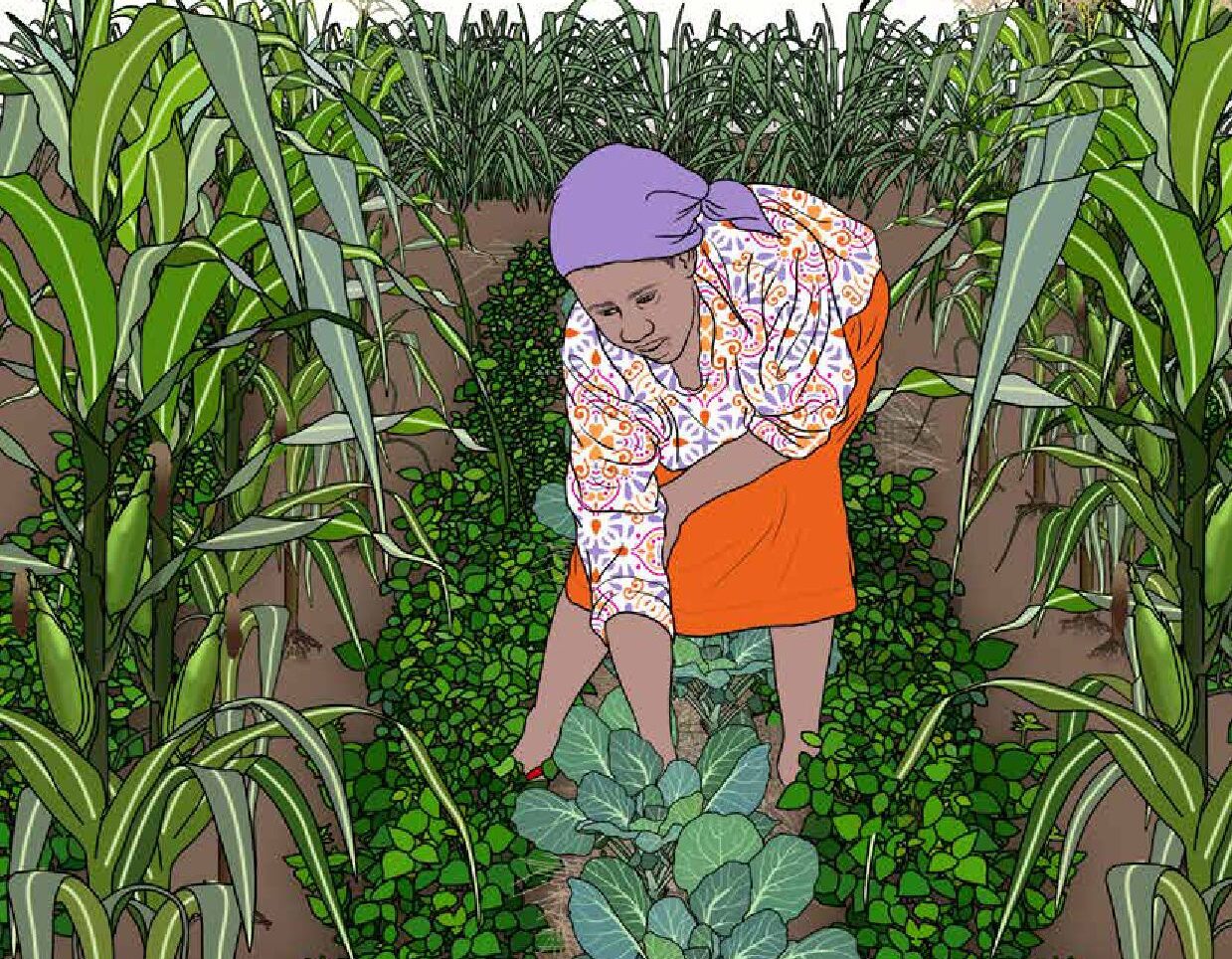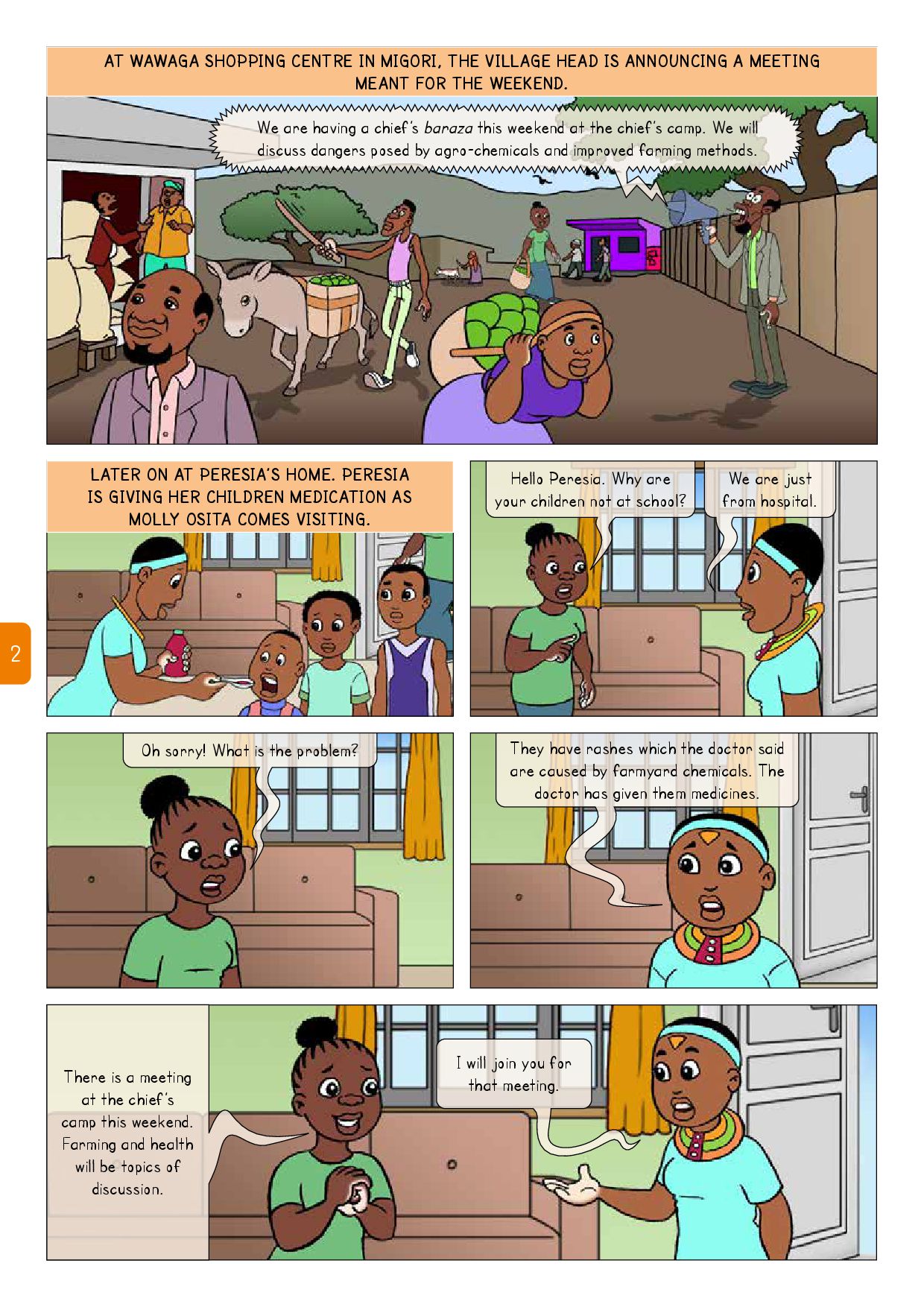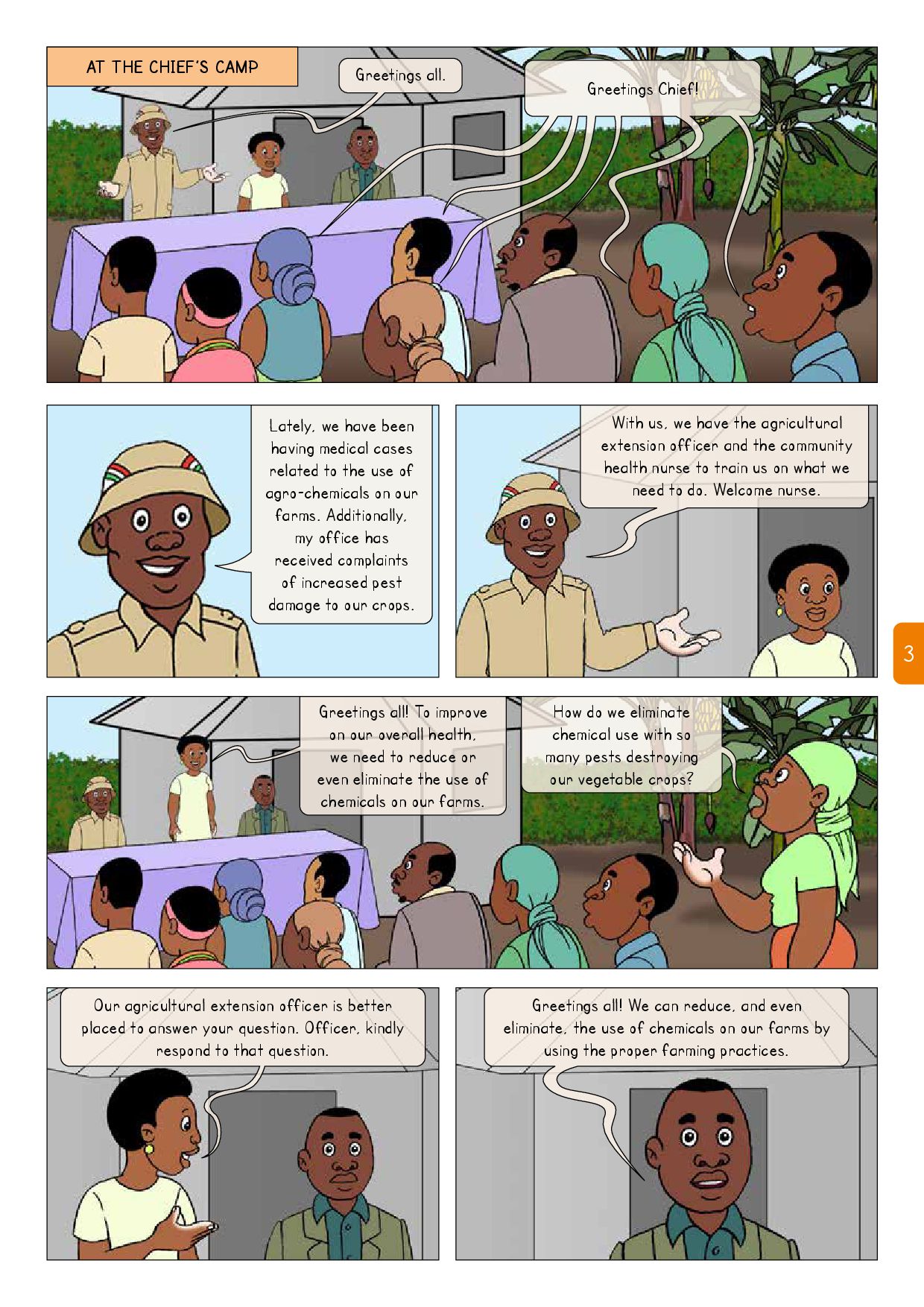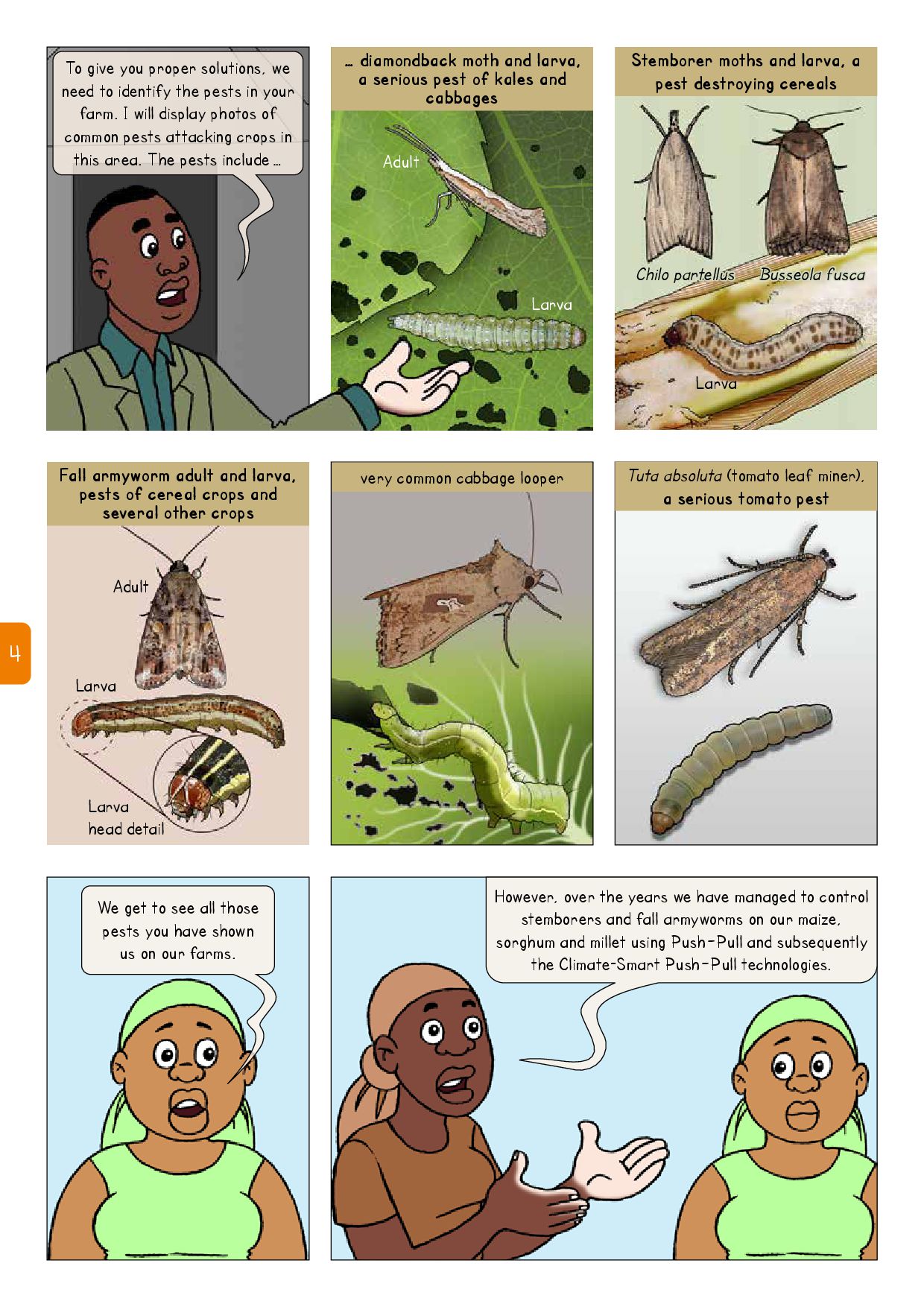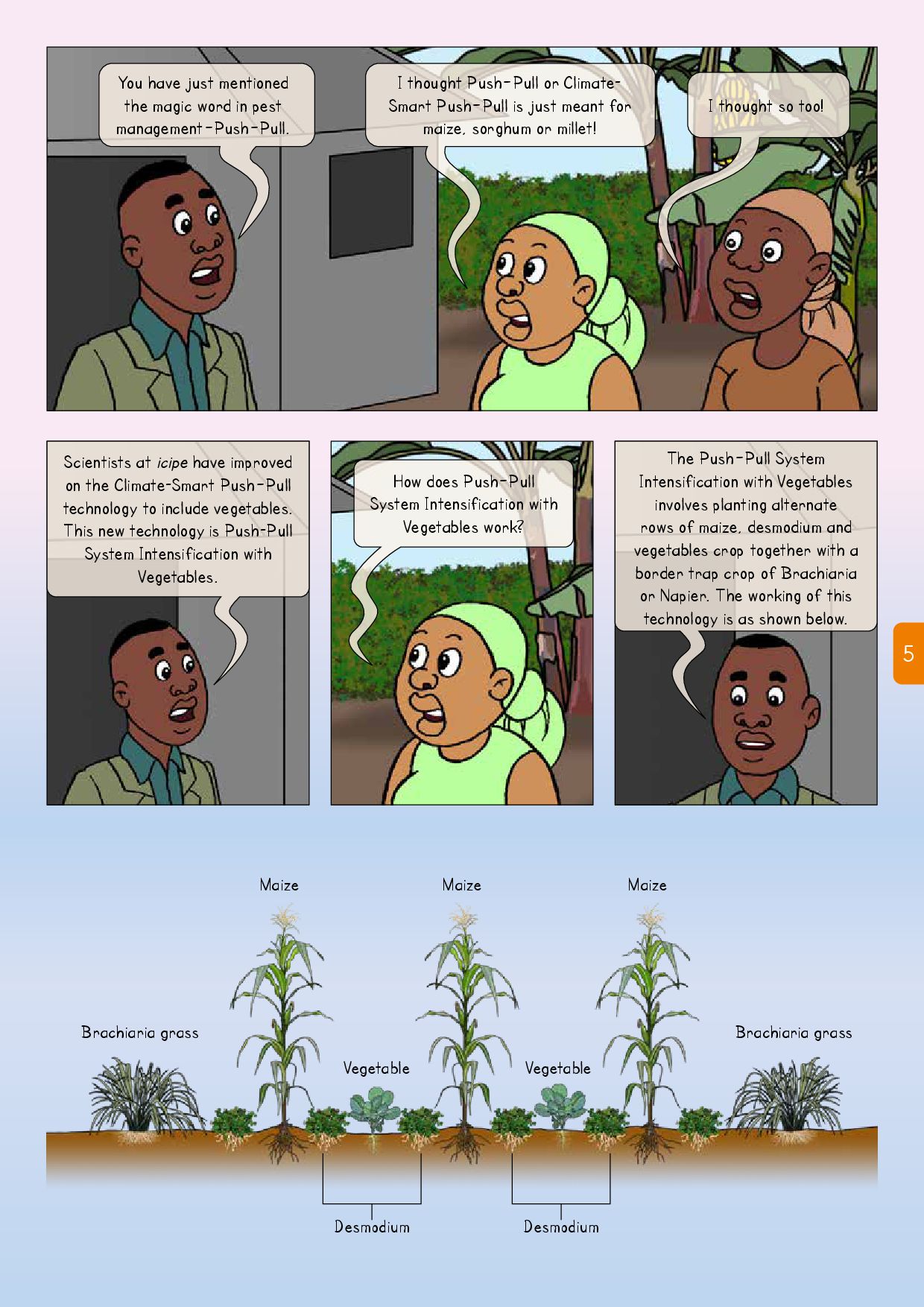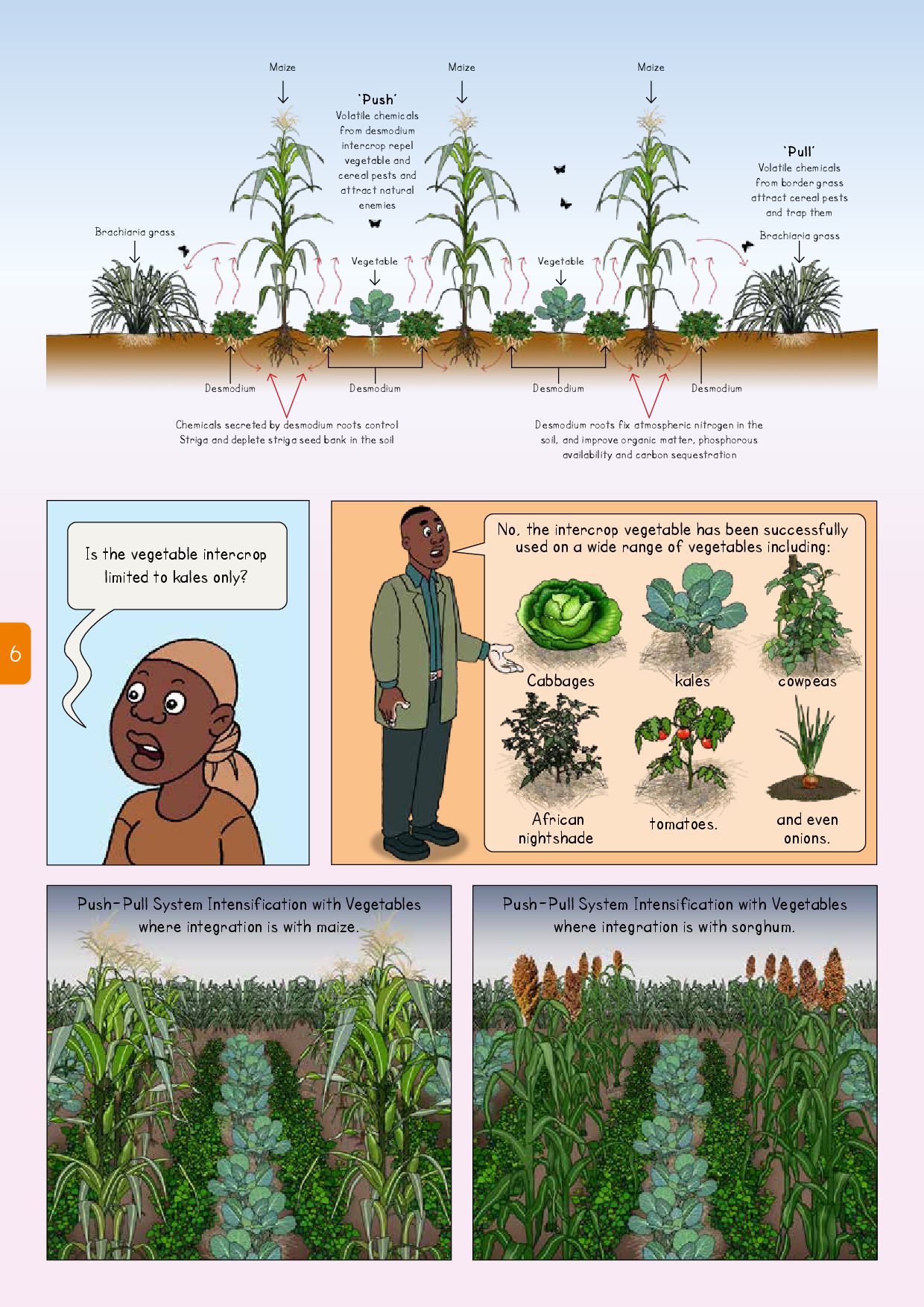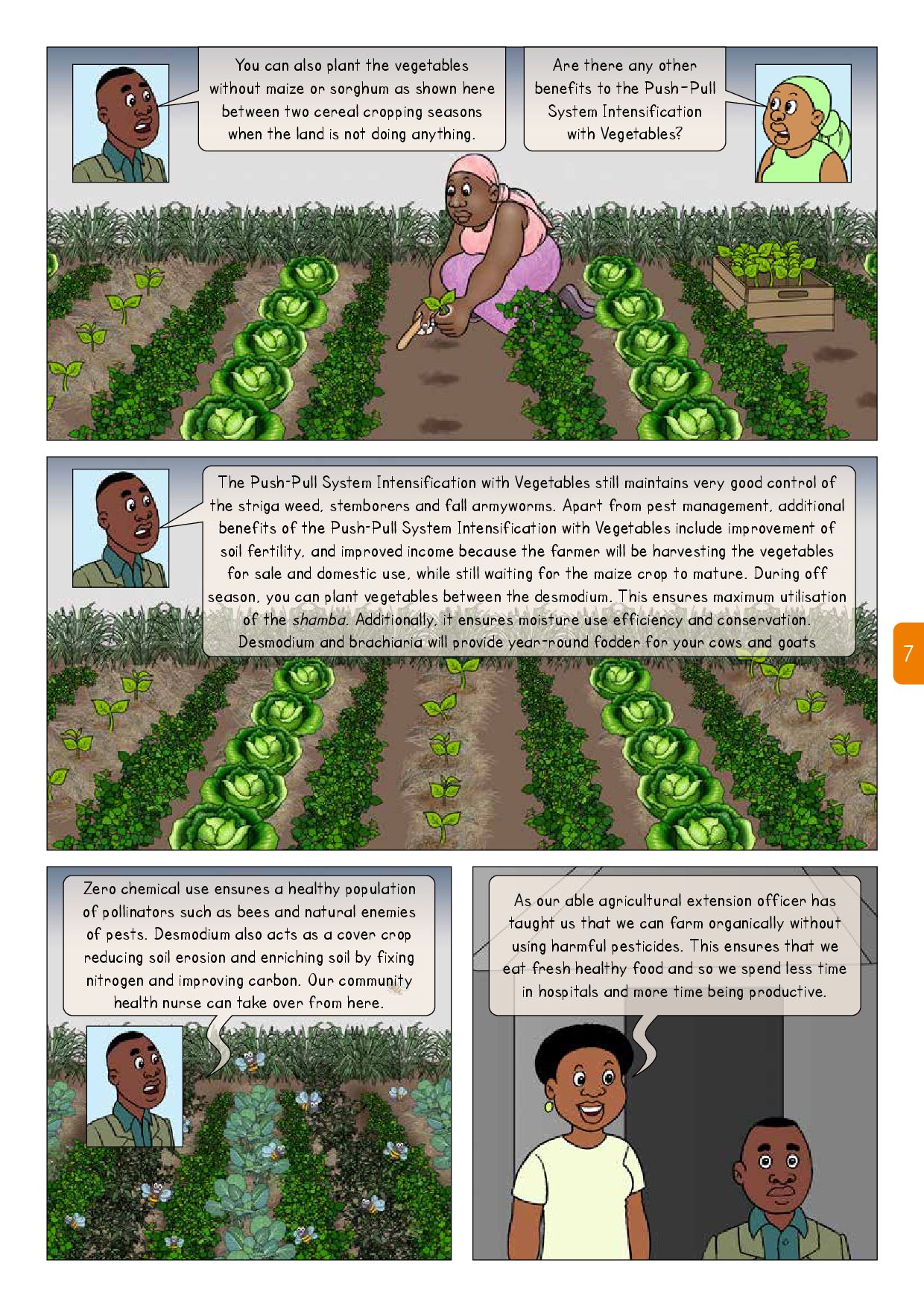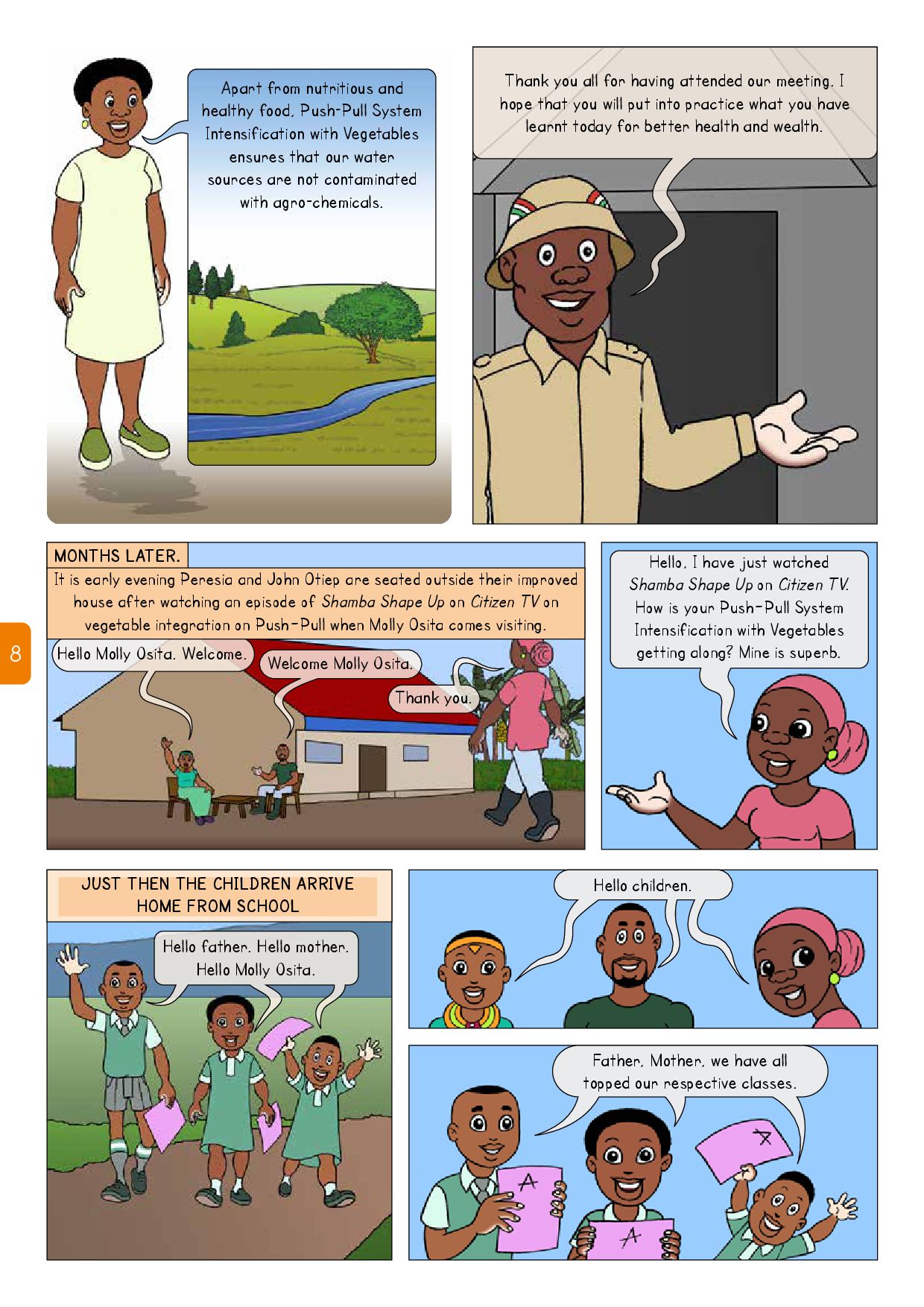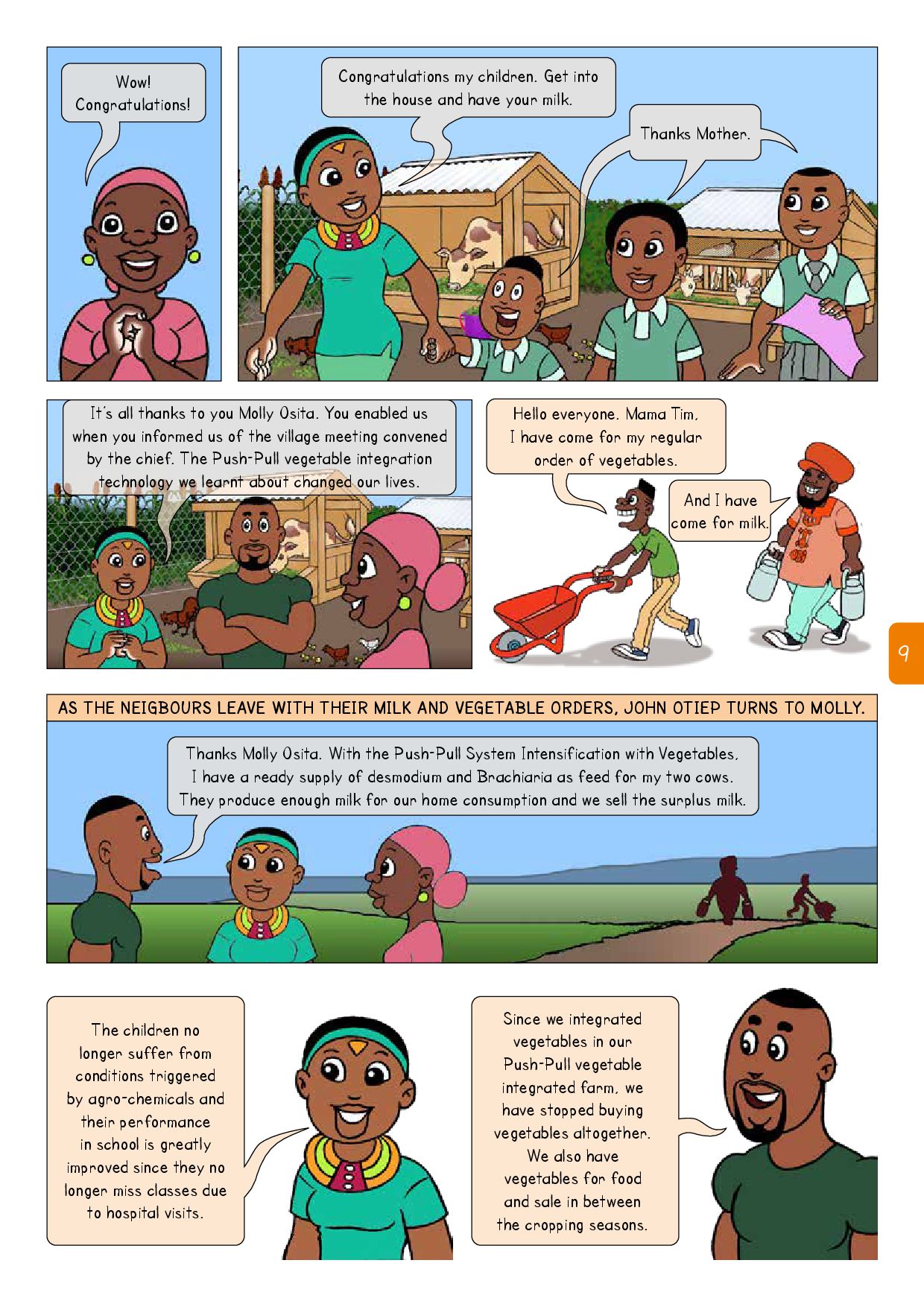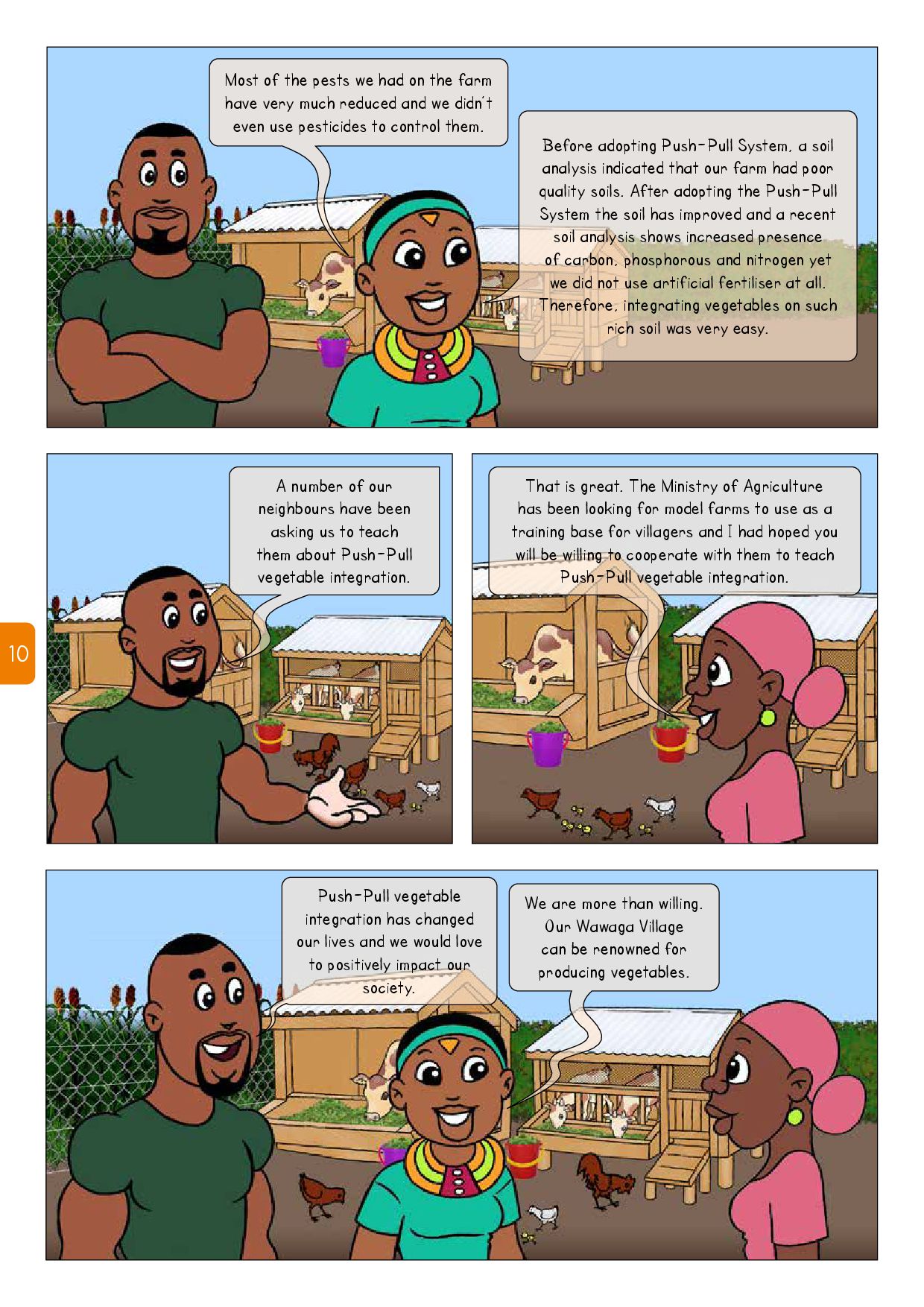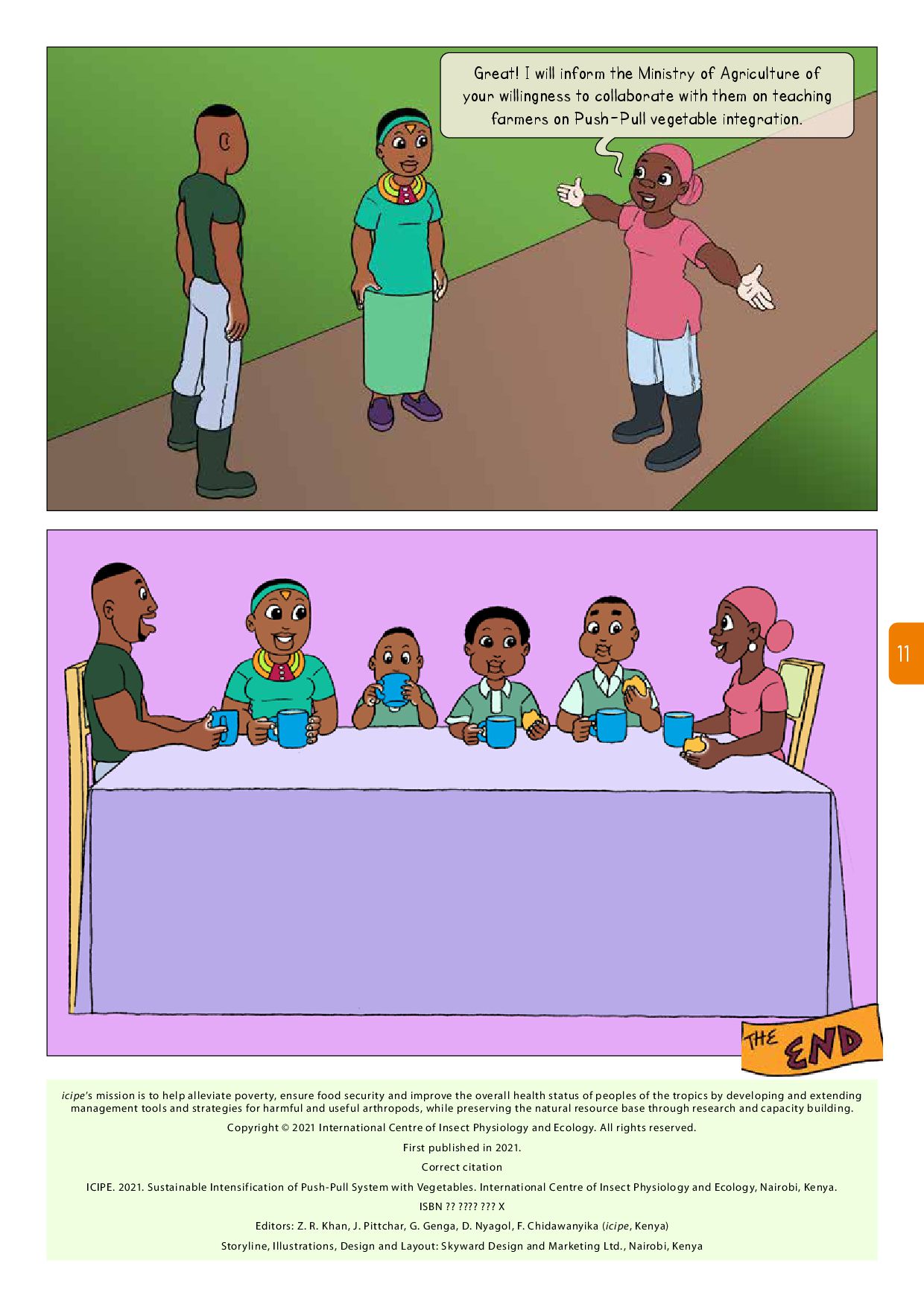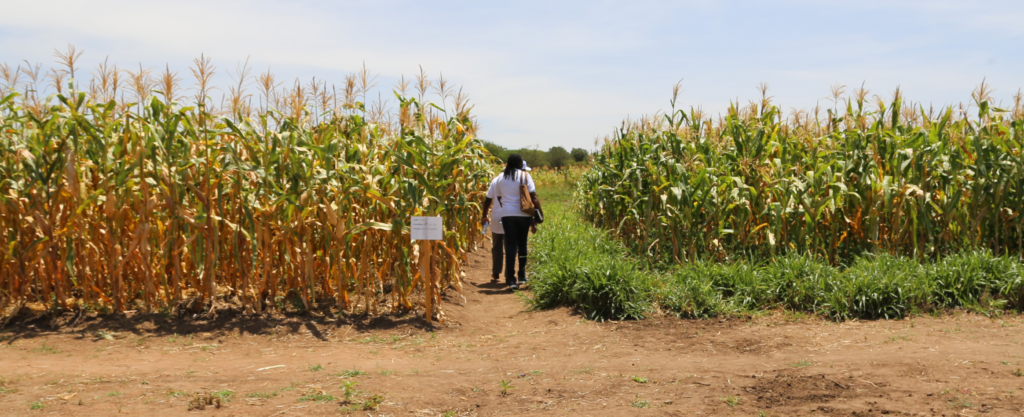
Push-pull technology is a novel approach in pest management which uses a repellent intercrop and an attractive trap plant. Insect pests are repelled from the food crop and are simultaneously attracted to a trap crop. A ‘push-pull’ strategy was developed by ICIPE and its collaborators for the control of stemborers and striga weed in resource-poor maize farming systems. This technology controls both stemborers and striga and improves soil fertility.
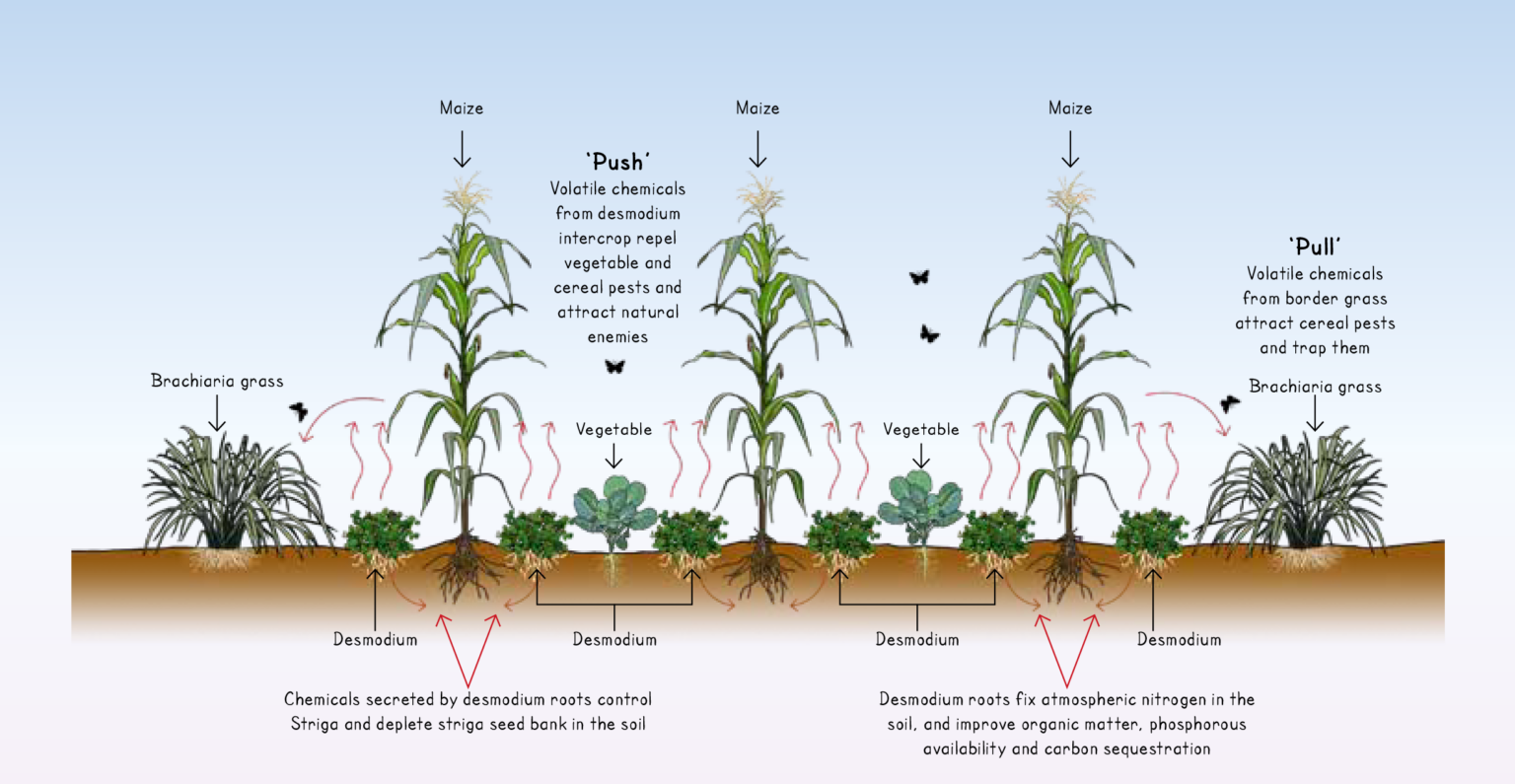
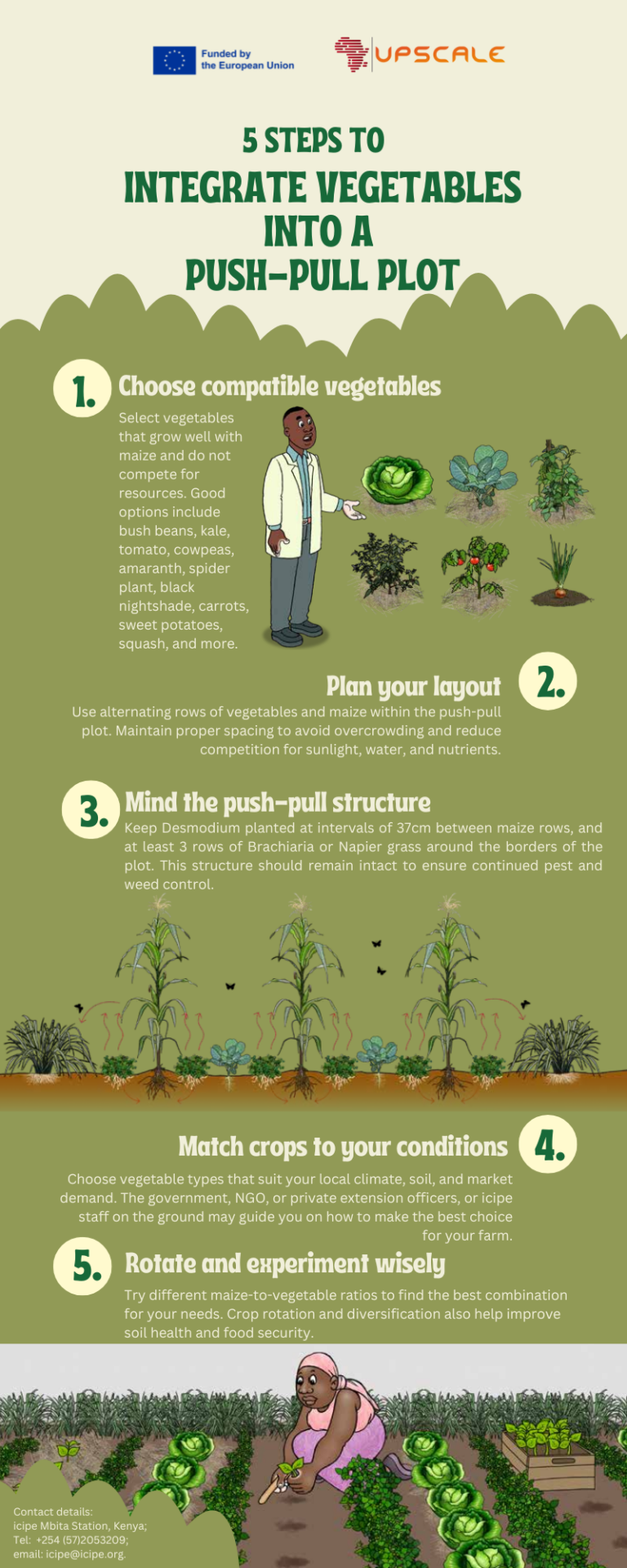
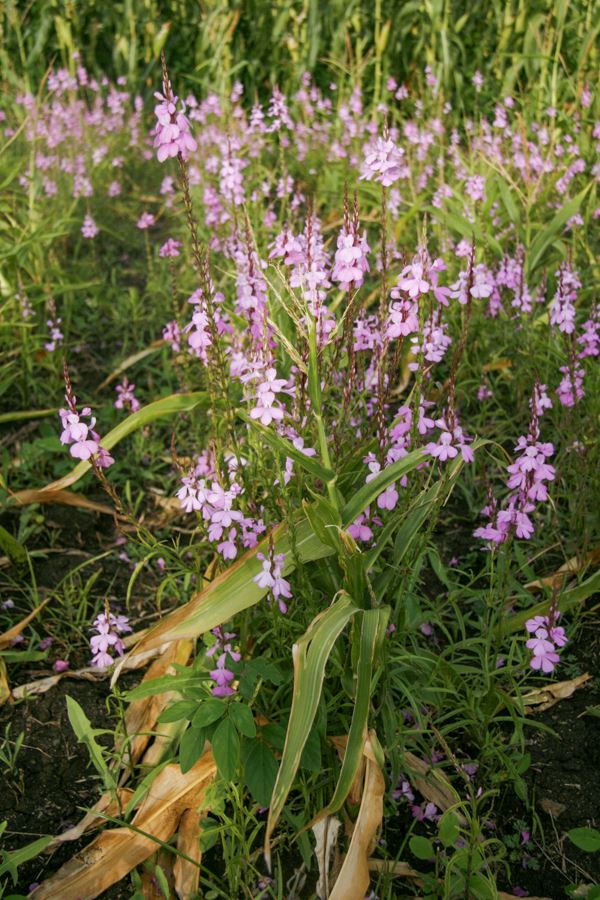
Striga weeds
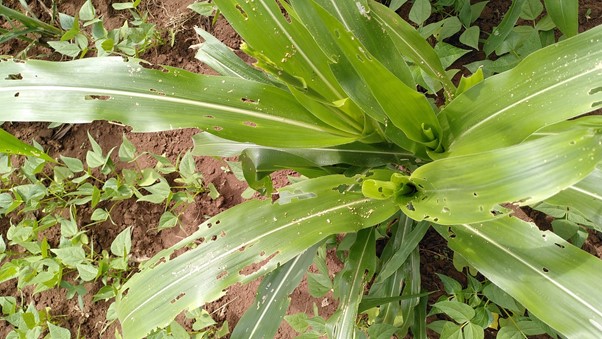
Losing your maize yield to stemborers and striga?
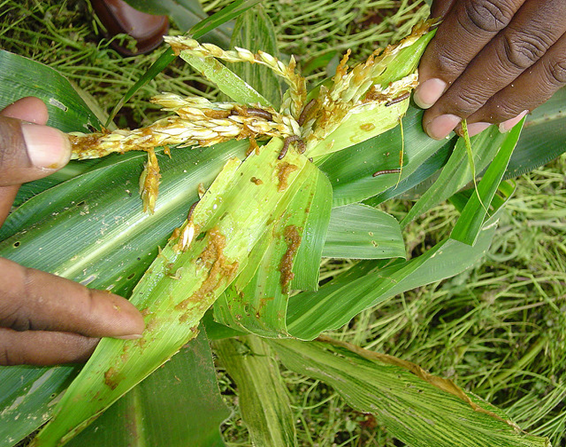
Stemborers

Empowerment, support and challenges in implementing push-pull
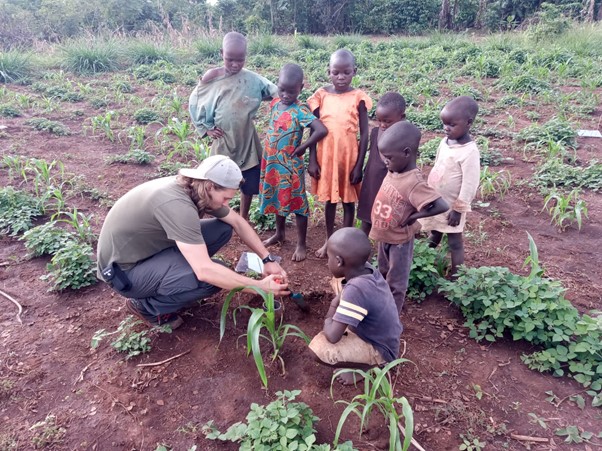
Ecological investigations on push-pull

Towards further sustainable intensification of push-pull systems
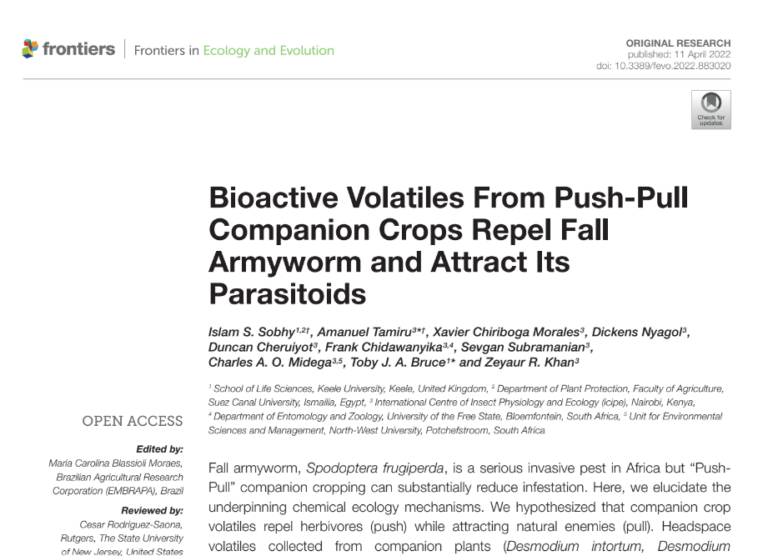
Bioactive Volatiles From Push-Pull Companion Crops Repel Fall Armyworm and Attract Its Parasitoids
Fall armyworm, Spodoptera frugiperda, is a serious invasive pest in Africa but “Push-Pull” companion cropping can substantially reduce infestation.
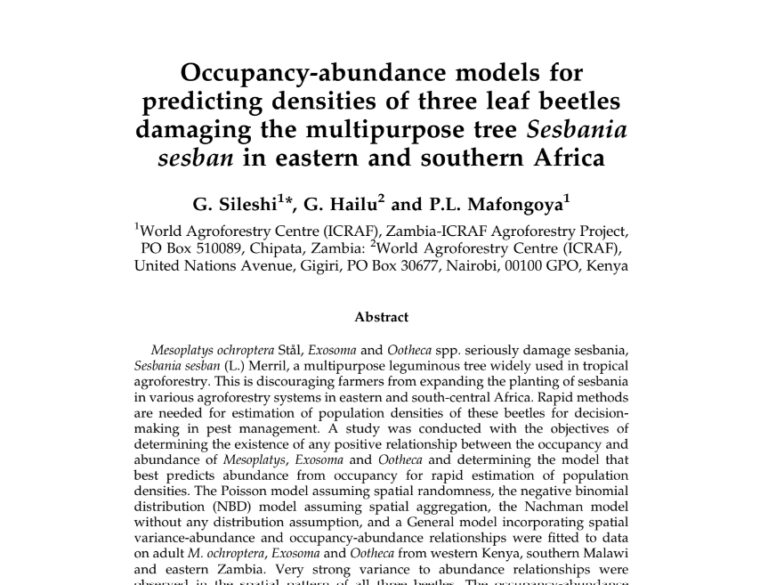
Occupancy-abundance models for predicting densities of three leaf beetles damaging the multipurpose tree Sesbania sesban in eastern and southern Africa
Mesoplatys ochroptera Sta ̊l, Exosoma and Ootheca spp. seriously damage sesbania, Sesbania sesban (L.) Merril, a multipurpose leguminous tree widely used in tropical agroforestry.
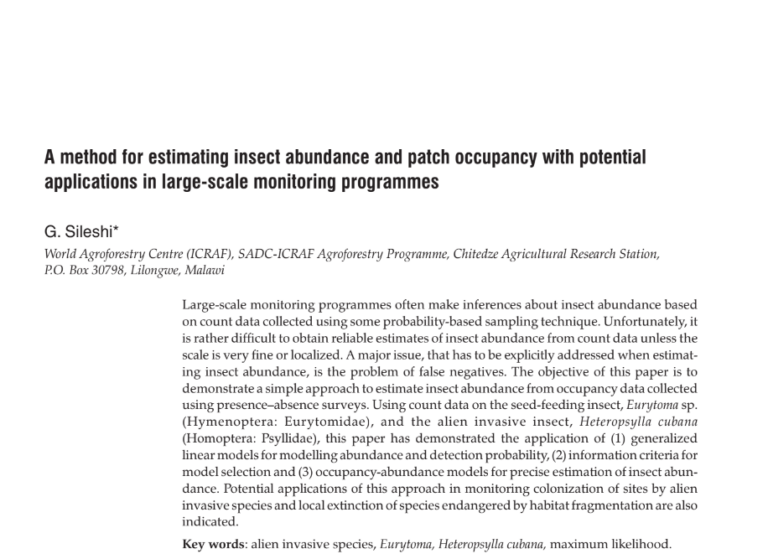
A method for estimating insect abundance and patch occupancy with potential applications in large-scale monitoring programmes
Large-scale monitoring programmes often make inferences about insect abundance based on count data collected using some probability-based sampling technique.
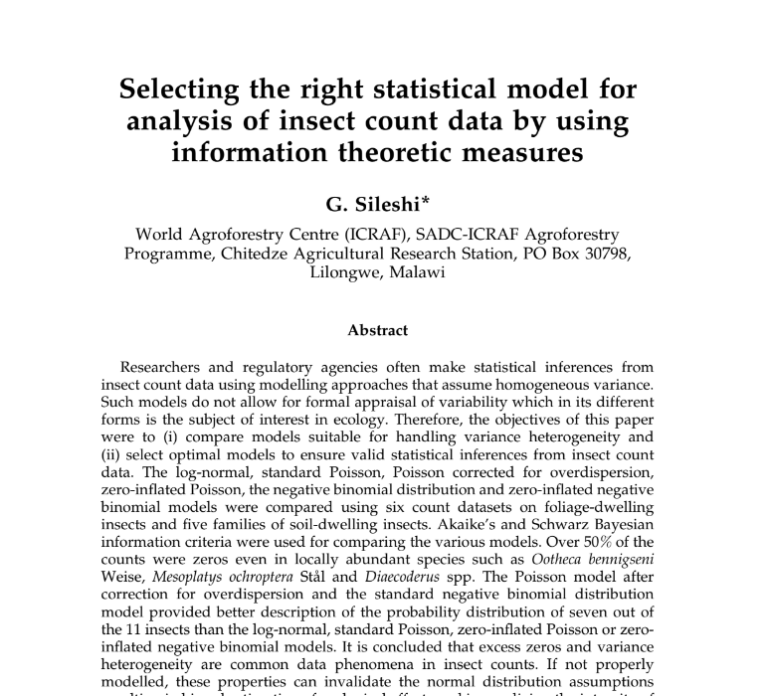
Selecting the right statistical model for analysis of insect count data by using information theoretic measures
Researchers and regulatory agencies often make statistical inferences from insect count data using modelling approaches that assume homogeneous variance.
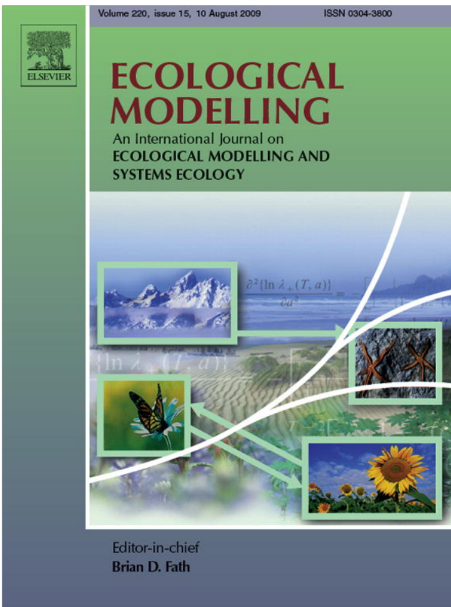
Traditional occupancy–abundance models are inadequate for zero-inflated ecological count data
Traditional occupancy–abundance and abundance–variance–occupancy models do not take into account zero-inflation, which occurs when sampling rare species or in correlated counts arising from repeated measures.
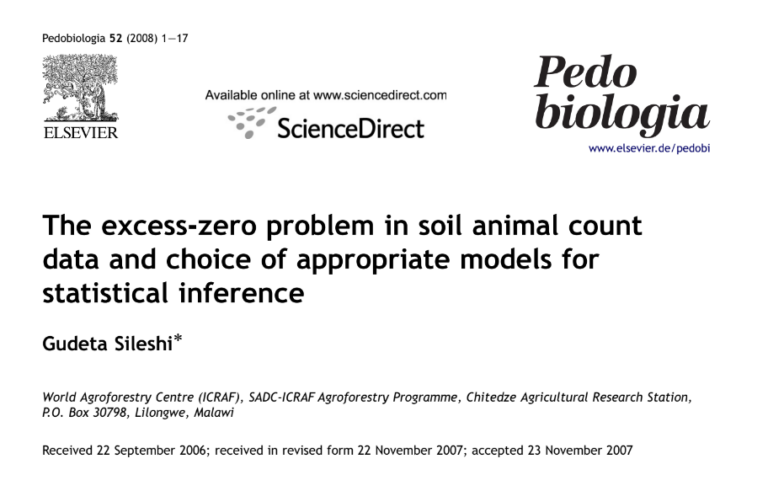
The excess-zero problem in soil animal count data and choice of appropriate models for statistical inference
Recent studies show that soil animal count data are characterized by the presence of excess zeros and overdispersion, which violate the assumptions of standard statistical tests.
